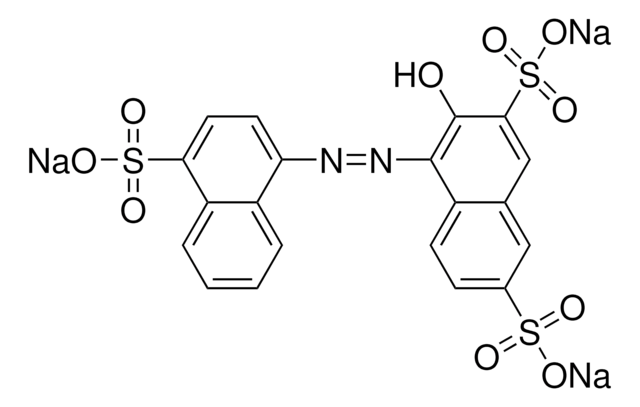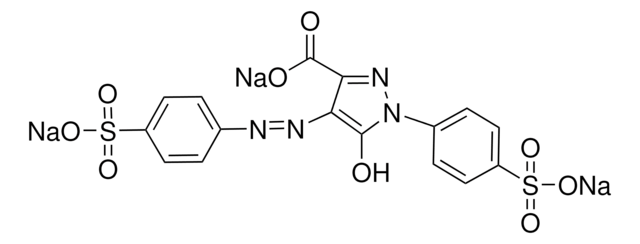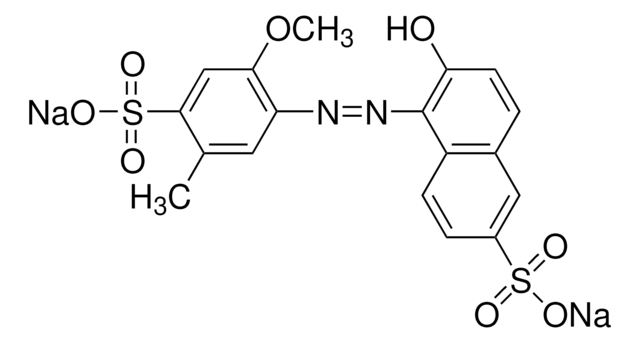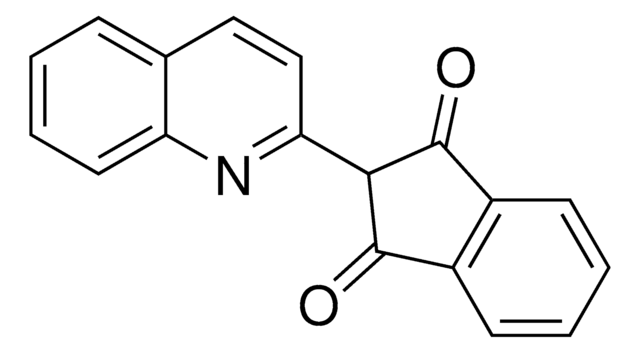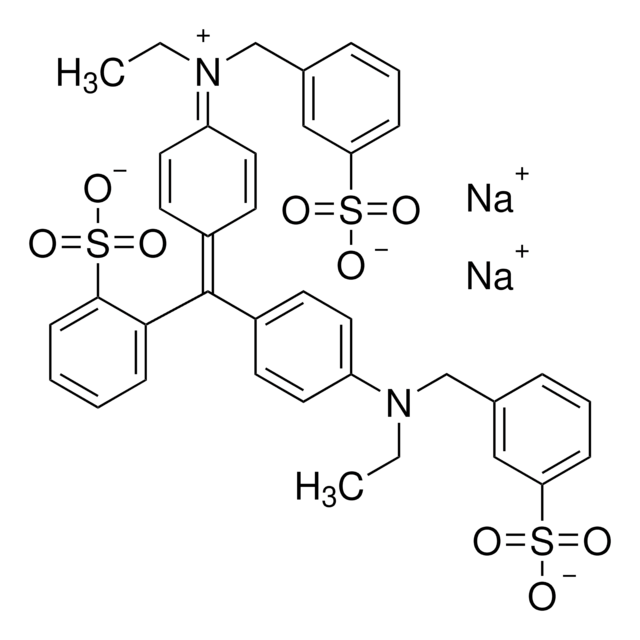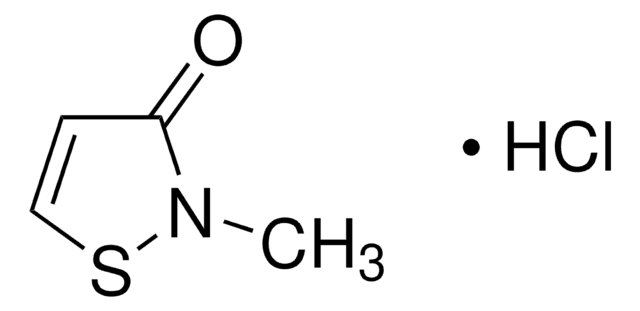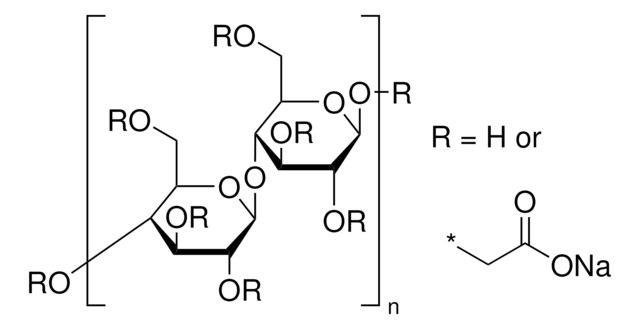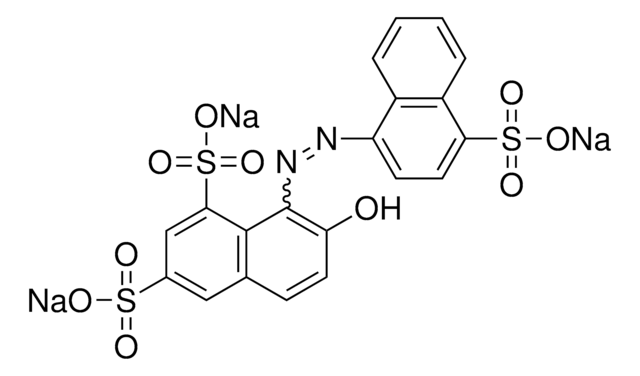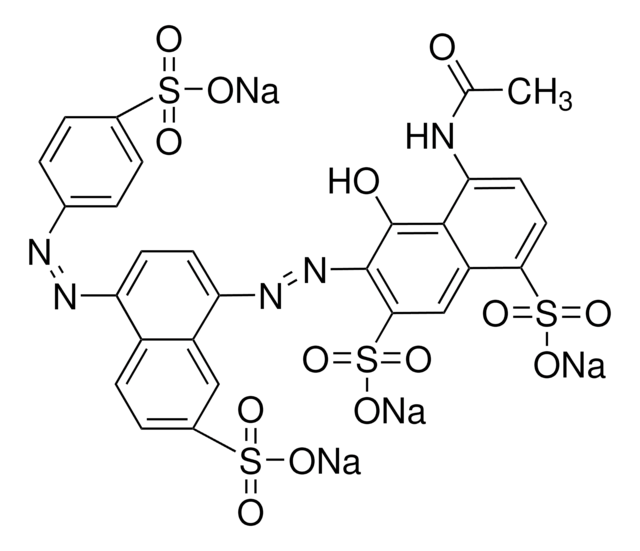A1016
Amaranth
Dye content 85-95 %, Powder
Synonym(s):
Acid Red 27, Azorubin S, FD & C Red Dye No. 2
About This Item
Recommended Products
product name
Amaranth, Dye content 85-95 %
form
powder
Quality Level
composition
Dye content, 85-95%
technique(s)
microbe id | staining: suitable
color
brown to red-brown
pH
9.65 (28 °C, - OECD Test Guideline 122 - alkaline)
mp
>350 °C (at 966.25 hPa)
solubility
H2O: 10 mg/mL
application(s)
diagnostic assay manufacturing
hematology
histology
storage temp.
room temp
SMILES string
[Na+].[Na+].[Na+].Oc1c(N=Nc2ccc(c3ccccc23)S([O-])(=O)=O)c4ccc(cc4cc1S([O-])(=O)=O)S([O-])(=O)=O
InChI
1S/C20H14N2O10S3.3Na/c23-20-18(35(30,31)32)10-11-9-12(33(24,25)26)5-6-13(11)19(20)22-21-16-7-8-17(34(27,28)29)15-4-2-1-3-14(15)16;;;/h1-10,23H,(H,24,25,26)(H,27,28,29)(H,30,31,32);;;/q;3*+1/p-3
InChI key
WLDHEUZGFKACJH-UHFFFAOYSA-K
Looking for similar products? Visit Product Comparison Guide
Related Categories
Application
Biochem/physiol Actions
signalword
Warning
hcodes
Hazard Classifications
Eye Irrit. 2
Storage Class
11 - Combustible Solids
wgk_germany
WGK 3
flash_point_f
417.2 °F - closed cup
flash_point_c
214 °C - closed cup
ppe
dust mask type N95 (US), Eyeshields, Gloves
Certificates of Analysis (COA)
Search for Certificates of Analysis (COA) by entering the products Lot/Batch Number. Lot and Batch Numbers can be found on a product’s label following the words ‘Lot’ or ‘Batch’.
Already Own This Product?
Find documentation for the products that you have recently purchased in the Document Library.
Customers Also Viewed
Protocols
Separation of Tartrazine; Amaranth; Indigo carmine; New Coccine; Sunset Yellow FCF; Allura Red AC; Fast Green FCF; Erioglaucine disodium salt; Erythrosin B sodium salt; Phloxine B; Rose bengal
Our team of scientists has experience in all areas of research including Life Science, Material Science, Chemical Synthesis, Chromatography, Analytical and many others.
Contact Technical Service